Best Free AI Tools Every Coder Should Use
The coding landscape has undergone a seismic shift these days; however, 2025 marks a pivotal second phase where artificial intelligence has become an indispensable companion for builders worldwide. What started as experimental autocomplete choices has developed into refined AI packages, which will understand context, generate full capabilities, debug superior factors, and even architect full features.
As we navigate through 2025, the democratization of AI devices has reached unprecedented levels. Free AI coding assistants now offer capabilities that were once exclusive to enterprise solutions, fundamentally changing how developers approach problem-solving, code optimization, and project management. From startups bootstrapping their first MVP to seasoned engineers at Fortune 500 firms, AI devices have become the great equalizer in software development progress.
This transformation is not just about faster coding; it also focuses on enhancing human creativity, enabling developers to concentrate on higher-order thinking while AI manages the repetitive and mundane tasks. The question is not whether or not you should utilize AI devices, but rather which ones provide you with the aggressive edge in an increasingly more AI-driven progress ecosystem.
TL;DR: Key Takeaways
• GitHub Copilot remains the gold standard for AI-powered code completion, now with enhanced context consciousness and multi-language assistance.
• ChatGandwever Claude provides extremely efficient code know-how; however, debugging capabilities are provided by pure language interfaces
• Tabnine provides privacy-focused AI assistance with on-premise deployment decisions for delicate initiatives
• Codeium delivers enterprise-grade choices totally free, together with chat efficiency and repository-wide understanding
• Phind specializes in developer search with AI-powered explanations and real-time internet outcomes
• Aider revolutionizes pair programming with autonomous code modifying capabilities • Integration of quite a few devices creates compound productivity options, but requires a strategic approach to steer clear of cognitive overload
What Are AI Coding Tools?
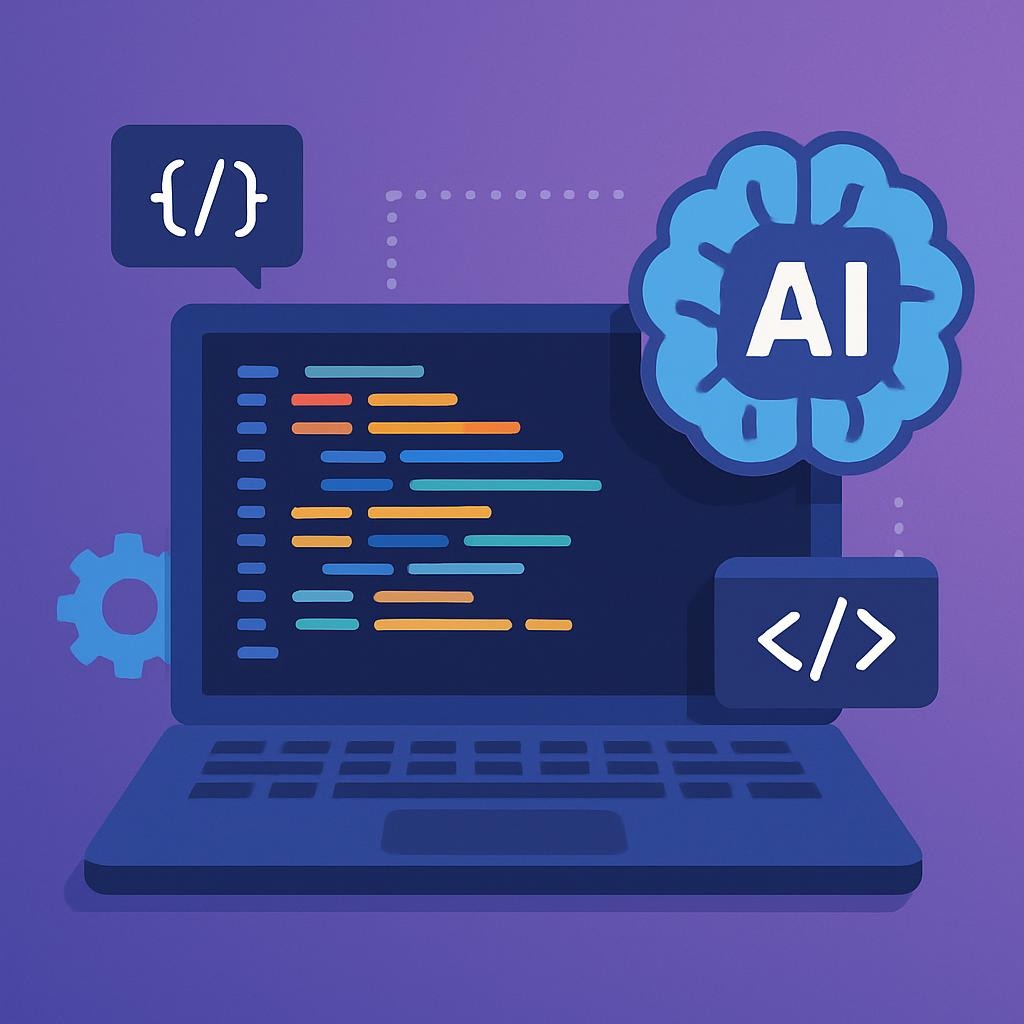
AI coding devices signify a paradigm shift from standard progress utilities. These smart helpers use large language models (LLMs), which are trained on vast amounts of code, to understand coding patterns, suggest code completions, create code from simple language descriptions, and provide relevant insights about building software.
Unlike typical IDEs that rely on static analysis and predefined templates, AI coding devices make use of machine learning to adapt to your coding trend, understand the endeavor context, and make intelligent predictions about what you’re making and try to carry it out. They operate across multiple layers, ranging from specific line completions to comprehensive function knowledge and architectural recommendations.
AI Coding Tools Comparison Table
| Tool Category | Traditional Tools | AI-Powered Tools |
|---|---|---|
| Code Completion | Static key phrase matching | Context-aware, multi-line suggestions |
| Debugging | Manual breakpoint analysis | Natural language bug explanations |
| Documentation | Manual writing | Auto-generated with context |
| Code Review | Human-only course of | AI-assisted pattern detection |
| Learning | Stack Overflow searches | Interactive AI tutoring |
| Refactoring | Manual pattern matching | Intelligent code transformation |
Why AI Coding Tools Matter More Than Ever in 2025
The software development industry has reached an inflection point where AI literacy has become as fundamental as model management and testing frameworks. According to GitHub’s 2024 Developer Survey, 92% of builders are already using AI coding devices, with productivity enhancements averaging 55% across different programming duties.
Business Impact, however, is ROI
Organizations implementing AI coding devices report essential measurable benefits:
- Development Speed: Teams using AI assistants perform full duties 35-50% before standard workflows (McKinsey Global Institute)
- Code Quality: AI-suggested code reveals 15% fewer bugs in manufacturing environments (Google Research)
- Onboarding Time: New builders become productive 40% sooner when supported by AI devices (Stack Overflow Developer Survey)
- Technical Debt: AI-assisted refactoring reduces legacy code maintenance by 30% (Gartner)
The Developer Experience Revolution
Modern AI devices have evolved from simple autocomplete features to become genuine coding companions. They understand context through full repositories and preserve dialog history about your endeavor; moreover, they may even make clear superior algorithms in plain English. This shift has profound implications for how we examine and prepare for software development progress.
Have you Have you noticed how AI tools have changed your debugging approach? Many developers report that AI assistance has transformed debugging from a frustrating trial-and-error process into a collaborative problem-solving experience.
Consumer, however, Market Dynamics
The democratization of AI coding devices has created equal opportunities for individual builders and small teams to engage with the topic. Features that previously required expensive enterprise licenses are now available in free tiers, allowing startups and freelancers to compete with larger organizations on technical capabilities more affordably than on software access.
Types, however, are categories of AI coding tools.
Understanding the panorama of AI coding devices requires recognizing their distinct lessons and utilizing cases. Each type serves specific development needs; however, it excels particularly in certain scenarios.
AI Coding Tools Category Matrix
| Category | Primary Function | Best Use Cases | Example Tools | Potential Pitfalls |
|---|---|---|---|---|
| Code Completion | Real-time suggestions | Daily coding, boilerplate | GitHub Copilot, Tabnine | Over-reliance, context loss |
| Chat Assistants | Conversational help | Debugging, construction | ChatGPT, Claude | Hallucinations, outdated info |
| Search & Research | Developer search | Learning, troubleshooting | Phind, Perplexity | Information overload |
| Autonomous Coding | Independent code writing | This includes tasks such as refactoring and attribute implementation. | Aider, Cursor | Less administration and analysis overhead |
| Specialized Tools | Domain-specific duties | Testing, documentation | Various | Limited scope, integration factors |
Code Completion Engines
These devices mix straight into your progress setting, providing real-time suggestions as you type. They excel at understanding quick context; however, they may overlook minor details, such as variable names and final capabilities.
Key Insight: The handiest code completion devices examine your explicit codebase for coding patterns, turning into additional appropriate code over time.
Conversational AI Assistants
Chat-based AI devices allow builders to clarify points in pure language and acquire code choices and explanations but not debugging help. They are highly effective for exploring new concepts, but they excel at troubleshooting issues.
Search, however, research platforms.
AI-powered search tools are specifically designed to provide builders with relevant outcomes that go beyond those of regular search engines like Google, often including code examples; however, the explanations are tailored to specific programming contexts.
Which type of AI software do you find most valuable in your daily workflow? The reply normally relies upon whether or not you’re primarily writing new code, sustaining present packages, or learning new utilized sciences.
Essential Components of Effective AI Coding Tools
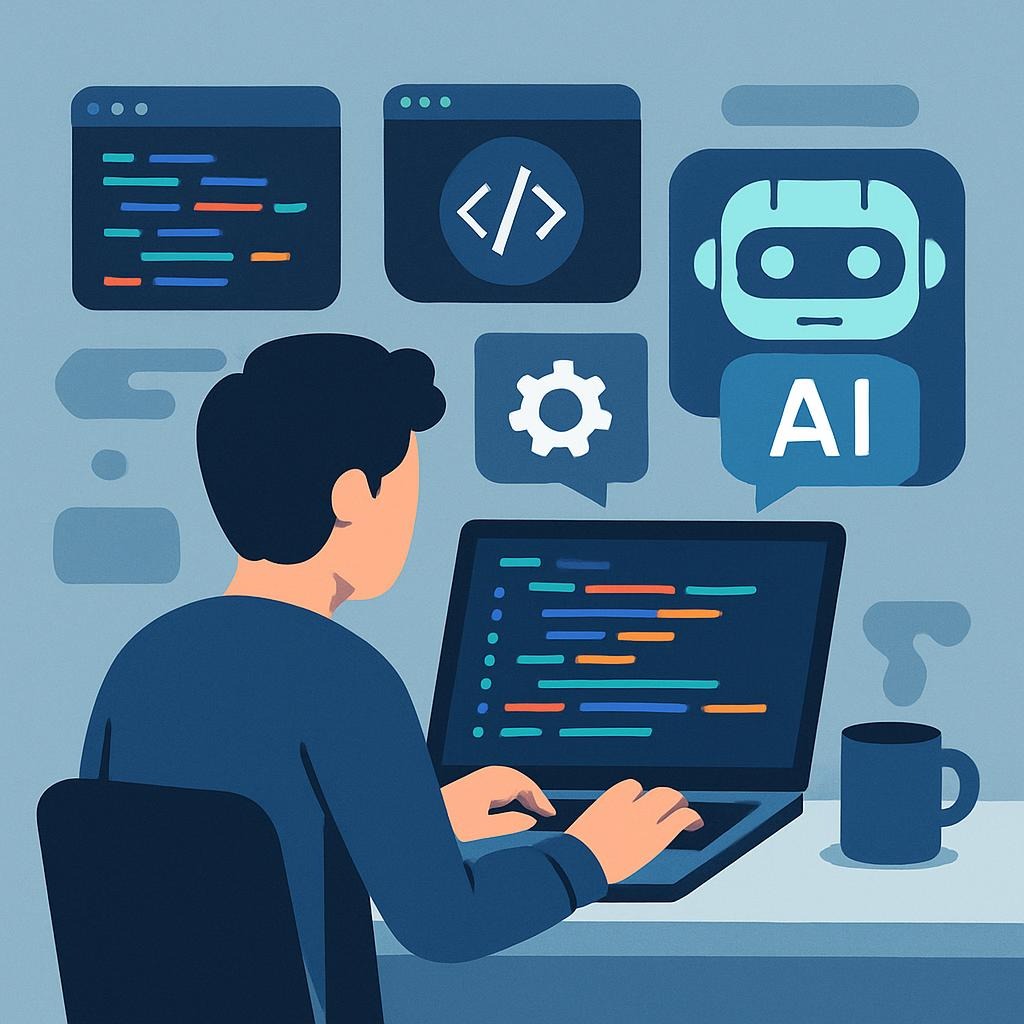
The most impactful AI coding devices share quite a few essential traits that distinguish them from a lot of much less environmentally friendly alternatives. Understanding these parts helps builders make educated decisions about software program adoption.
Context awareness,awareness, however, is repository understanding.
Modern AI devices ought to understand not merely the current file but also the whole endeavor’s development. This incorporates:
- Multi-file Context: Understanding relationships between completely different modules, however, parts
- Version History: Leveraging Git history to know code evolution;evolution; however, patterns
- Dependency Mapping: Recognizing how external libraries and frameworks affect suggestions
- Project-Specific Patterns: Adapting to crew coding necessities, however, architectural alternatives
Natural Language Processing Capabilities
The best AI coding devices can interpret human intent expressed in pure language and translate it into the appropriate code. This consists of:
- Intent Recognition: Understanding what the developer needs to carry out
- Code Generation: Producing syntactically acceptable and contextually relevant code
- Explanation Generation: Providing clear explanations of superior code and algorithms
- Multi-language Support: Working efficiently all through completely completely different programming languages
Learning, however, involves adaptation mechanisms
Effective AI devices continuously improve through interactions.
- Feedback Integration: Learning from shopper acceptance but rejection of suggestions
- Pattern Recognition: Identifying recurring coding patterns, specifically initiatives
- Performance Optimization: Improving suggestions for excessive quality primarily based on utilization information
- Custom Model Training: Adapting to organization-specific coding necessities
💡 Pro Tip: The most worthwhile AI software program implementations comprise teams that actively use current recommendations to reinforce suggestions of high quality over time.
Advanced AI Coding Strategies, however, Techniques
Mastering AI coding tools requires shifting from previous basic utilization to elegant integration strategies that multiply productivity options.
Multi-Tool Orchestration
Rather than relying on a single AI software program, expert builders create workflows that leverage entirely different devices for explicit duties:
Primary Coding Flow:
- Use GitHub Copilot for real-time completion
- Switch to ChatGPT for superior problem-solving
- Employ Phind for evaluation; however, the documentation lookup
- Apply Aider for autonomous refactoring duties
Prompt Engineering for Developers
To effectively utilize AI software programs, it is essential to create a rapid engineering experience specifically tailored for coding contexts:
Effective Coding Prompts:
- “Refactor this function to use the strategy pattern while maintaining backward compatibility.”
- “Generate unit tests for this API endpoint that cover edge cases and error conditions.”
- “Optimize this database query for better performance with large datasets.”
⚡ Quick Hack: Create a non-public rapid library for widespread coding duties. This ensures consistency and saves time when working with chat-based AI devices.
Context Management Strategies
Managing context efficiently is important for getting appropriate AI suggestions:
- Code Comments: Write descriptive suggestions sooner than requesting AI assistance.
- Function Signatures: Define clear function signatures to info AI suggestions
- Type Annotations: Use type hints to provide additional context for AI devices
- README Updates: Keep endeavor documentation current to reinforce AI understanding
Agentic AI Development Workflows
The term “Agentic AI” refers to the state-of-the-art AI coding devices, which are packages designed to autonomously fulfill choices while refactoring tasks. These devices require cautious administration:
Agentic AI Best Practices:
- Start with small, well-defined duties
- Provide full verification of safety
- Review all AI-generated code completely
- Maintain human oversight of architectural alternatives
💡 Pro Tip: Use agentic AI for exploratory prototyping, then refine the outcomes manually for manufacturing code.
Vibe Coding, however, is Creative Development
“Vibe coding” refers to the use of AI devices to explore creative options, even if the approaches are unconventional. This method works best when:
- Experimenting with new algorithms and information constructions
- Exploring completely different architectural patterns
- Generating creative choices to distinctive points
- Rapid prototyping of recent choices
Case Studies: AI Tools Transforming Development in 2025
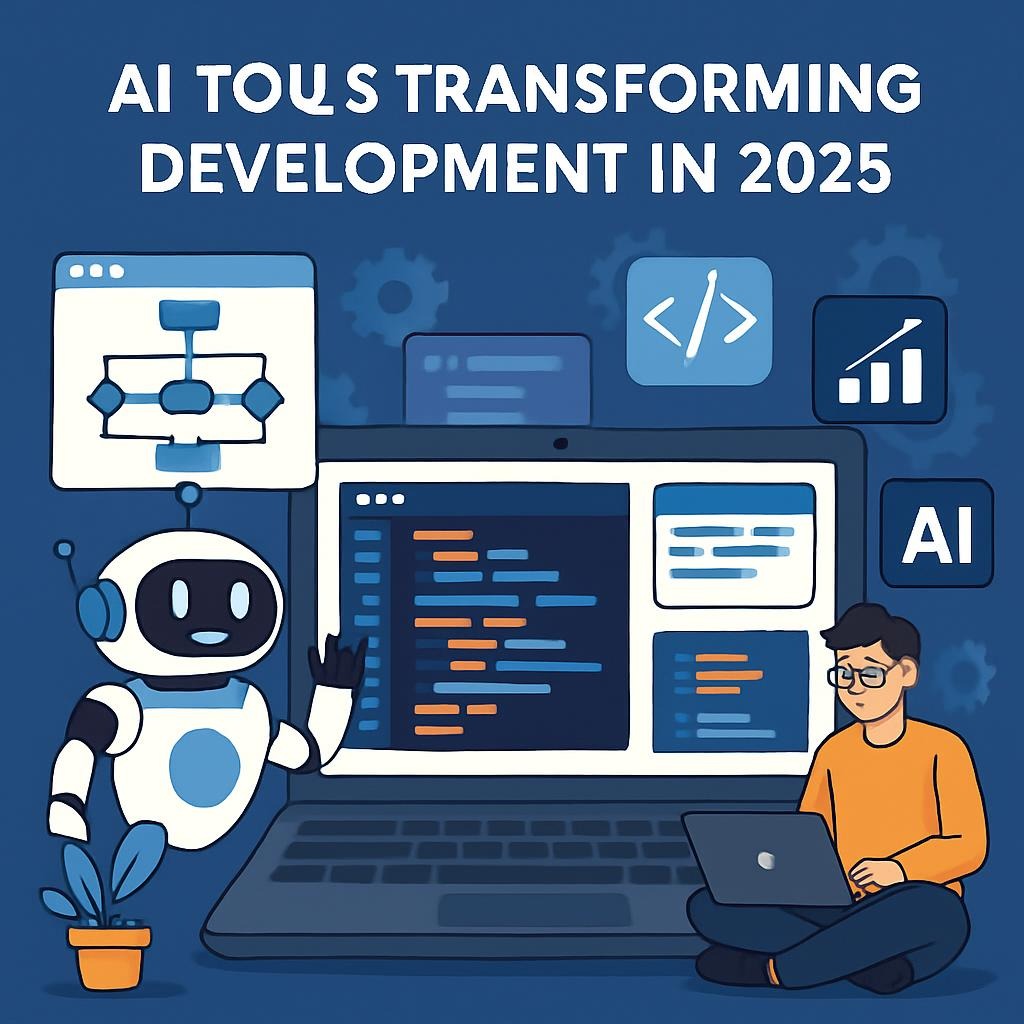
Case Study 1: Startup MVP Development with Codeium
Background: TechFlow, a fintech startup, wished to develop a cryptocurrency portfolio tracker with a restricted progress property.
Implementation: The two-person progress crew built in Codeium for code completion and ChatGPT for construction alternatives. They leveraged AI devices for:
- Database schema design, however, optimization
- API endpoint implementation
- Frontend half know-how
- Security best practices implementation
Results:
- Development time lowered from projected 6 months to 3.5 months
- Code excessively high-quality scores improved by 23% in comparison with earlier initiatives
- Security vulnerabilities decreased by 40% with AI-suggested best practices
- Total progress value monetary financial savings: $180,000
Key Lessons: AI tools allowed a small team to compete with larger development groups while maintaining high-quality code, which was essential.
Case Study 2: Legacy System Modernization with GitHub Copilot
Background: RetailCorp wished to modernize a 15-year-old inventory administration system built in Java 8, migrating to a modern Spring Boot construction.
Implementation: A crew of 8 builders used GitHub Copilot alongside standard refactoring devices:
- Automated conversion of legacy patterns to fashionable equivalents
- Generated full unit exams for untested legacy code
- Created API documentation for present endpoints
- Implemented stylish security patterns
Results:
- Legacy codebase modernization achieved 45% before standard approaches
- Test safety elevated from 12% to 87%
- Post-migration bug experiences decreased by 60%
- Developer satisfaction scores improved significantly
Success Factors: Combining AI assistance with expert human oversight proved essential for superior legacy modernization initiatives.
Case Study 3: Open Source Contribution Acceleration
Background: The Apache Kafka group experimented with AI-assisted contribution workflows to address their backlog of attribute requests and bug fixes.
Implementation: Contributors used a variety of AI tools, includingincluding
- Phind for understanding superior codebase construction
- Aider for autonomous code know-how
- ChatGPT for documentation enhancements
- Custom AI fashions expert on Kafka-specific patterns
Results:
- Contribution analysis time lowered by 30%
- New contributor onboarding accelerated by 50%
- Documentation of excessive high quality has improved significantly
- Community engagement has been elevated as a result of lower limitations to entry
Impact: AI devices democratize open-source contributions, enabling builders with a lot less expertise to make vital contributions.
Do you assume AI devices will basically alter how open-source communities perform? The evidence indicates that they are already having a transformative impact on collaboration patterns.
The 7 Best Free AI Coding Tools of 2025
1. GitHub Copilot (Free Tier)
GitHub Copilot has developed significantly since its preliminary launch, now offering refined multi-line completions and context-aware suggestions that understand full repositories.
Key Features:
- Repository-wide context understanding
- Multi-language assistance for 100+ programming languages
- Integration with modern IDEs and editors, however,
- Chat efficiency for conversational coding assist
Free tier limitationstier limitations include 50 completions per month for individual builders, full access for faculty students, and availability for maintainers.
Best Use Cases: Daily coding and boilerplate knowledge, as well as learning new programming patterns.
💡 Pro Tip: Enable GitHub Copilot’s “ghost text” attribute to see completions without accepting them, serving to help you examine new coding patterns.
2. Codeium
Codeium stands out by offering enterprise-grade choices totally free, making it a distinctive choice for individual builders and small teams.
Key Features:
- Unlimited completions, however, are chat interactions
- Repository indexing for increased context consciousness
- Privacy-focused with native processing decisions
- Support for 70+ programming languages
Standout Advantage: No utilization limits, but subscription requirements for core choices.
Best Use Cases: Teams that require limitless AI assistance and are involved in privacy-sensitive initiatives butinitiatives but also have regular integration workflows.
3. ChatGPT-4 (Free Tier)
Although ChatGPT-4’s free tier is not specifically designed for coding, it offers highly efficient code knowledge; however, debugging capabilities rely solely on language interaction.
Key Features:
- Natural language to code know-how
- Complex algorithm explanations
- Debugging assists with error interpretation
- Architecture, however, has design pattern recommendations
Free Tier Limitations: Rate limiting through peak hours, restricted entry to the latest choices.
Best Use Cases: Learning new concepts, debugging superior factors, and architectural planning.
4. Tabnine
Tabnine emphasizes privacy and customization, offering on-premise deployment decisions and team-specific model teaching.
Key Features:
- Local AI model deployment
- Team-specific model teaching
- Enterprise security compliance
- Customizable completion preferences
Free Tier: Basic completions with restricted context understanding.
Best Use Cases: Security-conscious organizations, teams with explicit coding necessities, and managed industries.
⚡ Quick Hack: Use Tabnine’s native fashions for delicate codebases in places where cloud-based devices aren’t acceptable.
5. Phind
Phind revolutionizes developer search by combining standard search with AI-powered explanations and code know-how.
Key Features:
- Developer-focused search outcomes
- Real-time internet information integration
- Code occasion know-how
- Technical documentation synthesis
Unique Advantage: Combines current internet information with AI analysis for up-to-date technical insights.
Best Use Cases: Learning new technologies, troubleshooting specific errors, and researching best practices.
6. Claude (Anthropic)
Claude affords refined reasoning capabilities, considerably well-suited for superior coding points and architectural alternatives.
Key Features:
- Advanced reasoning, however, logic
- Detailed code explanations
- Ethical AI issues are built in
- Long-form technical writing assists
Free Tier: Limited everyday utilization with full attribute entry.
Best Use Cases: Complex disadvantage fixing, technical documentation, and code analysis assistance.
7. Aider
Aider represents the cutting edge of autonomous coding devices, capable of making modifications across multiple files based on natural language instructions.
Key Features:
- Autonomous multi-file modifying
- Git integration for alert monitoring
- Command-line interface for scripting
- Repository-wide understanding
Advanced Capability: Can implement full choices through a record of data with minimal human intervention.
Best Use Cases: Large-scale refactoring, attribute implementation, and code modernization initiatives.
Which of these tools aligns best with your current development workflow? The handiest technique normally consists of combining two or three devices rather than relying on a single decision.
Challenges, Ethics, and Responsible AI Usage
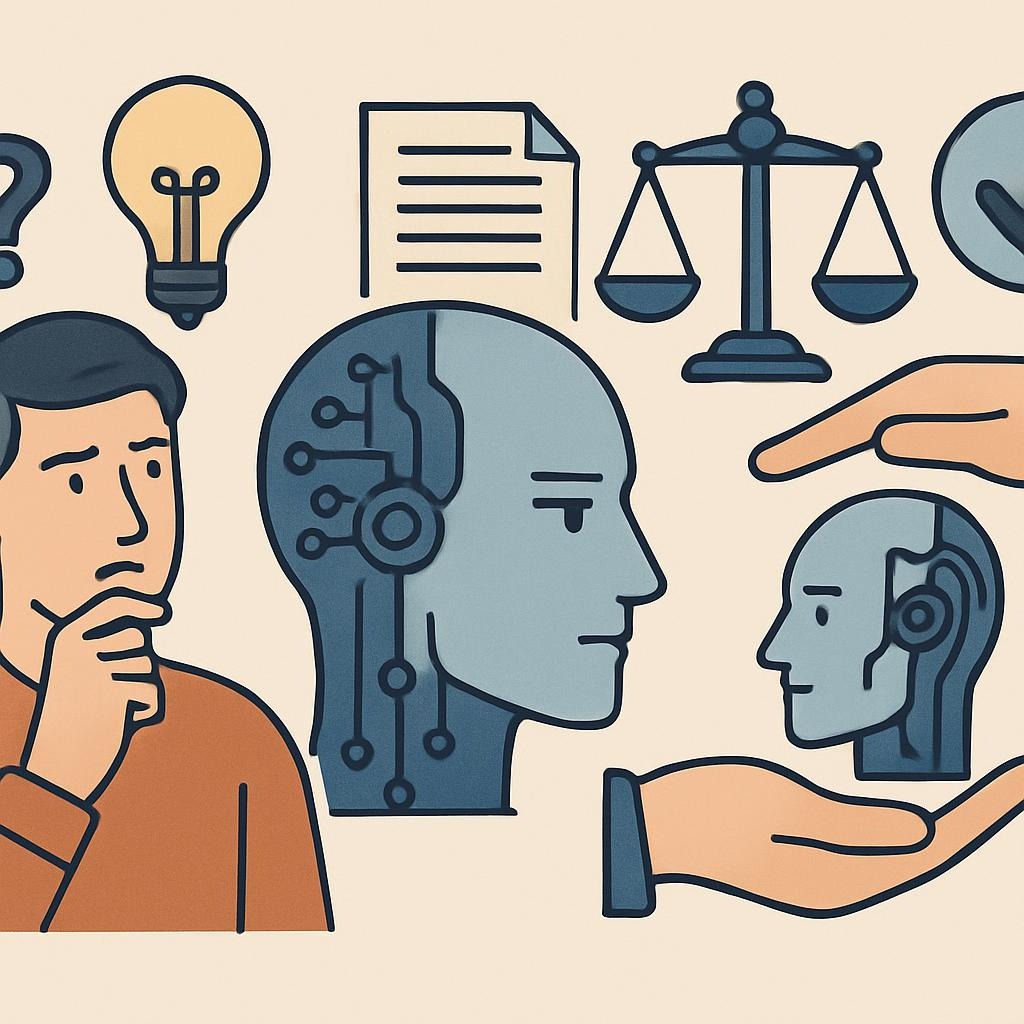
Security, however, has privacy considerations.
AI coding devices introduce new security vectors that builders ought to fastidiously address:
Data Privacy Risks:
- Code publicity to third-party AI firms
- Potential psychological property leakage
- Compliance violations in regulated industries
- Inadvertent publicity of API keys and credentials
Mitigation Strategies:
- Use native AI fashions for delicate initiatives
- Implement code scanning for uncovered secrets and techniques; however, methods
- Establish clear insurance coverage policies for AI software program utilization
- Regular security audits of AI software program configurations
Code quality, however, raises reliability concerns.
While AI devices can improve productivity, they also introduce risks related to excessively high code quality and maintainability.
Common Issues:
- Over-reliance on AI-generated code without understanding
- Inconsistent coding patterns throughout the crew members
- Hidden bugs in superior AI-generated algorithms
- Technical debt accumulation from quick AI fixes
Best Practices for Quality Assurance:
- Mandatory code analysis for all AI-generated code
- Comprehensive testing strategies, collectively with AI-generated exams
- Regular code, excessive high-quality audits, and metrics monitoring
- Team teaching on AI software program limitations, however, appropriate utilization
Bias and Fairness in AI Coding Tools
AI fashions can perpetuate biases present in their teaching information, leading to:
- Preference for positive programming languages but frameworks
- Reinforcement of outdated but problematic coding patterns
- Lack of selection in urged choices
- Cultural and linguistic biases in code suggestions and documentation, however
💡 Pro Tip: Regularly think about AI suggestions critically; however, search for varied views when making architectural alternatives.
Ethical Framework for AI Tool Usage
Organizations must arrange clear suggestions for accountable AI software program adoption:
Ethical Guidelines Checklist:
- [ ] Transparency about AI software program utilization in initiatives
- [ ] Regular bias testing and mitigation strategies
- [ ] Clear information governance insurance coverage policies
- [ ] Human oversight requirements for essential packages
- [ ] Continuous monitoring of the AI software program’s impression on crew dynamics
- [ ] Regular analysis, however, updates of AI utilization insurance coverage, and policies
Legal, however, licensing considerations
The approved panorama surrounding AI-generated code stays superior, however, while evolving:
Key Concerns:
- Copyright possession of AI-generated code
- License compatibility when AI suggests code from open-source initiatives
- Liability for bugs, but security factors in AI-generated code
- Compliance with software program audit requirements
Risk Management Approaches:
- Legal analysis of AI software program phrases of service
- Clear documentation of AI assistance in previous historical code
- Regular license compliance audits
- Established procedures for coping with IP disputes
Future Trends: What’s Coming in 2025-2026

Multimodal AI Development Environments
The subsequent wave of AI coding devices will mix visual, textual, and even audio inputs to create additional intuitive progress experiences:
Emerging Capabilities:
- Visual mockup to code know-how
- Voice-controlled coding for accessibility
- Screenshot-based bug reporting, however, analysis
- Diagram-to-architecture conversion
Specialized Domain AI Models
We are observing the significant emergence of AI fashion experts specifically tailored for certain domains, along with the development of frameworks.
Specialized Models in Development:
- Blockchain, however, has good contract progress
- Machine learning model optimization
- Cloud infrastructure as code
- Mobile app progress patterns
Real-time Collaborative AI
Future AI devices will enable seamless collaboration between human builders; however, AI packages:
Collaborative Features:
- Shared AI context among all crew members
- Real-time code suggestion synchronization
- AI-mediated code analysis processes
- Automated battle determination in collaborative modification
Autonomous Development Pipelines
By 2026, we anticipate seeing AI packages ready to manage full progress workflows:
Pipeline Automation:
- Automated testing method know-how
- AI-driven deployment optimization
- Intelligent monitoring, however, alerting
- Self-healing code packages
⚡ Quick Hack: Start experimenting with AI-powered CI/CD devices now to set up for completely autonomous progress pipelines.
Integration with Emerging Technologies
AI coding devices will increasingly mix with cutting-edge utilized sciences:
Technology Integration Trends:
- Quantum computing progress assists
- Extended reality (XR) software program progress
- Internet of Things (IoT) system design
- Edge computing optimization
How do you assume AI will alter the performance of software program architects over the next few years? The sample suggests that AI will handle more implementation details, while humans focus on high-level design and business logic.
Predictive Development Analytics
Advanced AI packages will provide current predictive insights about code efficiency and maintainability; however, there are potential factors to consider:
Predictive Capabilities:
- Performance bottleneck prediction
- Security vulnerability forecasting
- Code maintainability scoring
- Technical debt accumulation modeling
Tools, however, are platforms to watch.
Emerging Players
Several new AI coding devices are gaining traction in 2025:
Rising Stars:
- Blackbox AI: Specialized in code search; however, it knows how
- Sourcegraph Cody: Enterprise-focused with superior codebase understanding
- Amazon CodeWhisperer: Deep AWS integration for cloud progress
- Replit Ghostwriter: Browser-based progress with AI assistance
Enterprise, however, Team Solutions
Organizations are investing in full AI progress platforms:
Enterprise Platforms:
- GitHub Copilot for Business: Advanced crew choices and utilization analytics
- JetBrains AI Assistant: Deep IDE integration through the IntelliJ family
- Microsoft Power Platform: Low-code/no-code AI progress devices
- Google Duet AI: Integrated through Google Cloud progress devices
Open Source Initiatives
The open-source group is creating alternatives to industrial AI coding devices:
Notable Projects:
- Fauxpilot: Self-hosted GitHub Copilot is completely different
- StarCoder: Open provides code know-how fashions
- WizardCoder: Community-trained coding assistant
- Code Llama: Meta’s open-source coding model
Conclusion: Embracing the AI-Powered Development Future
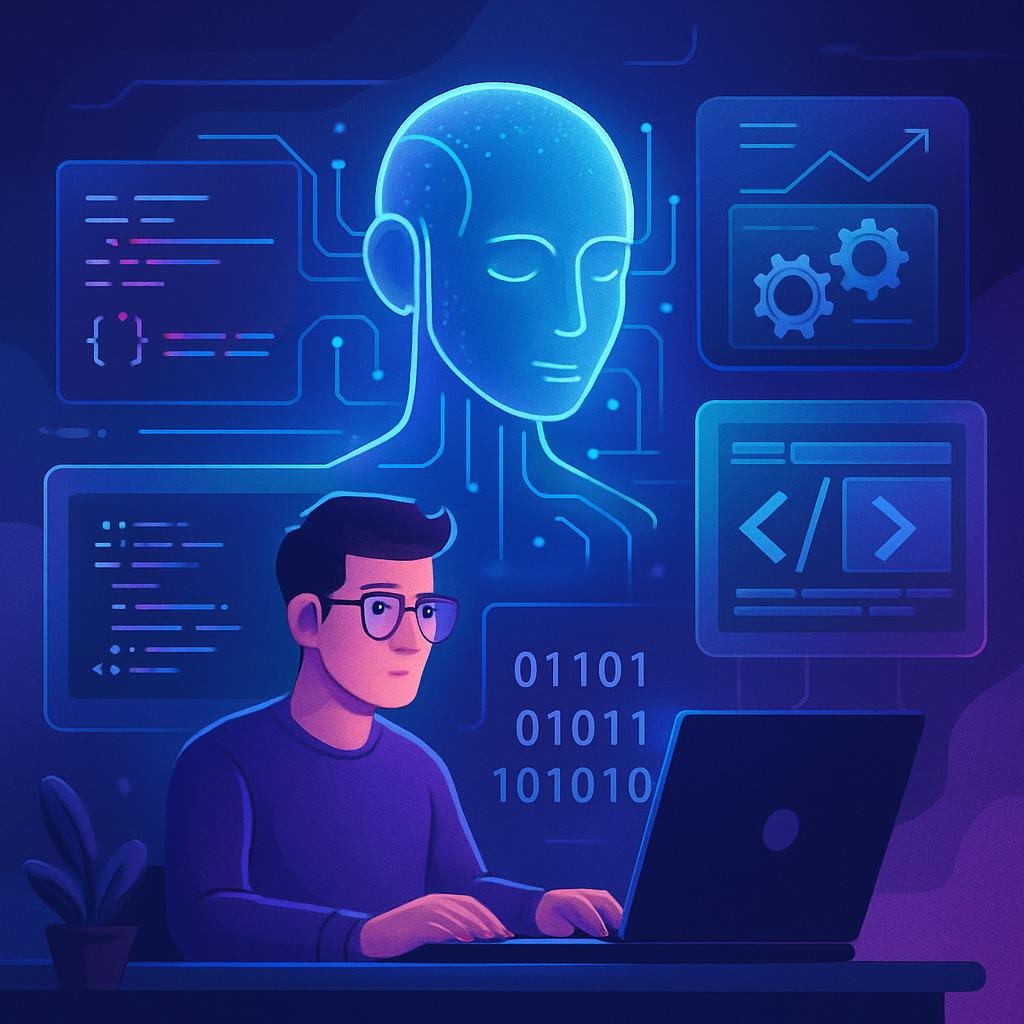
The transformation of software program progress by AI tools represents more than solely a technological enhancement—it’s an elementary shift in how we approach problem-solving, creativity, and collaboration in programming. As we have now explored with all this information, 2025 marks a pivotal year where AI coding devices have matured from experimental utilities to indispensable progress companions.
The proof is apparent: builders and other organizations that strategically undertake AI coding devices are experiencing essential aggressive advantages. From 35–50% enhancements in progress velocity to dramatic reductions in technical debt and security vulnerabilities, the quantifiable benefits far outweigh previous straightforward productivity options.
Strategic Implementation Roadmap
For explicit individual builders, however, in teams attempting to harness these devices efficiently, success requires a thoughtful, phased technique:
- Foundation Phase: Start with one main AI software program (advocate Codeium for limitless free utilization, but GitHub Copilot for superior choices)
- Integration Phase: Add complementary devices for explicit utilization cases (Phind for evaluation, ChatGPT for superior problem-solving)
- Optimization Phase: Develop superior workflows combining quite a few devices; however, arrange crew necessities
- Innovation Phase: Experiment with autonomous AI devices, utilizing advanced sciences
The Human-AI Partnership Model
The future of software development is not solely about AI changing human developers; it focuses on creating synergistic partnerships in which AI manages routine tasks while individuals concentrate on creative problem-solving, architectural options, and business logic. This partnership model requires builders to evolve their experience:
- Enhanced rapid engineering for environment-friendly AI communication
- Critical evaluation skills to gauge AI-generated choices
- Ethical reasoning to navigate the accountable utilization of AI devices
- Continuous learning to adapt to rapidly evolving AI capabilities
Preparing for Tomorrow’s Challenges
As we look toward 2026, several key trends will ignite the evolution of AI coding tools:
The emergence of multimodal progress environments will create additional intuitive strategies to work collectively with code, whereas specialized space fashions will cultivate deeper expertise in specific technical areas. Autonomous progress pipelines will cope with increasingly superior workflows; however, predictive analytics will help builders make increased architectural alternatives.
Your Next Steps
The question isn’t whether to use AI coding devices, but how quickly and efficiently you can integrate them. Based on our analysis, listed beneath are three quick actions you might take:
🚀 Start This Week: Sign up for Codeium; however, spend the long term integrating it into your main progress setting. Track your productivity modifications over the first week.
📚 Learn Continuously: Dedicate half an hour weekly to exploring new AI software program choices and capabilities. The panorama evolves shortly; however, staying current provides essential advantages.
🤝 Share, however, and collaborate: join AI coding communities, share experiences with crew members, and contribute to the collective learning about environmentally friendly AI software program utilization.
Call to Action
Are you ready to transform your workflow with AI? Visit our AI Development Tools Hub for detailed tutorials, crew implementation guides, and the latest AI coding software program comparisons.
What’s your biggest downside in adopting AI coding devices? Share your experiences inside the suggestions beneath; however, let’s assemble several builders effectively navigating the AI-powered progress panorama.
Frequently Asked Questions
How appropriate are AI coding suggestions in 2025?
AI coding suggestions have reached spectacular accuracy ranges, with devices like GitHub Copilot reaching 35–40% acceptance prices for multi-line suggestions and as much as 60% for single-line completions. However, accuracy varies significantly based on context, quality, programming language, and the complexity of the exercise. Python and JavaScript, however, usually see higher accuracy than specialized languages.
Can AI devices work with proprietary codebases?
Yes, many AI devices offer on-premise deployment options for proprietary codes. Tools like Tabnine and Codeium have current native processing capabilities, whereas GitHub Copilot for Business incorporates enterprise privacy controls. In any case, it is crucial to review the terms of service to ensure the implementation of appropriate security measures when working with sensitive code.
Do AI coding devices make builders lazy but a lot less professional?
Research suggests the opposite—AI devices actually enhance learning by exposing builders to new patterns and best practices. However, over-reliance without understanding may very well be problematic. The key is to use AI devices as learning aids instead of treating them as black boxes or merely reviewing instances of generated code without understanding.
What’s the coaching curve for AI coding devices?
Most builders report productivity options all through the first week of using AI coding devices. Basic proficiency normally develops within 2-3 weeks, whereas superior strategies like environment-friendly rapid engineering may take 1-2 months to understand. The learning curve is largely clear for builders cozy with stylish progress devices.
Are there explicit programming languages in places where AI devices excel?
AI devices perform best with modern languages like Python, JavaScript, and Java; however, C# benefits from ample teaching information. They’re, moreover, superb for internet-utilized sciences (HTML, CSS, React). Performance is additionally restricted for domain-specific languages and assembly codes, but not for very new languages with restricted teaching information.
How do I measure ROI from AI coding devices?
Track metrics such as lines of code written per hour, time spent debugging, frequency of code analysis recommendations, and project completion events. Many teams report 25–40% productivity enhancements through the first month. Also believe in the qualitative parts, like developer satisfaction and learning acceleration.
Author Bio
Alex Chen is a senior software architect with 12 years of experience in enterprise software program development, specifically AI software program integration. As a technical lead at CodeTalentHub, Alex has guided over 50 project teams through worthwhile AI software program adoptions, mainly to frequent productivity enhancements of 35%. Alex holds certifications in cloud construction and machine learning and generally speaks at developer conferences regarding the intersection of AI and software engineering. When not coding, Alex contributes to open-source AI progress devices and mentors junior builders in AI-assisted programming strategies.
People Also Ask
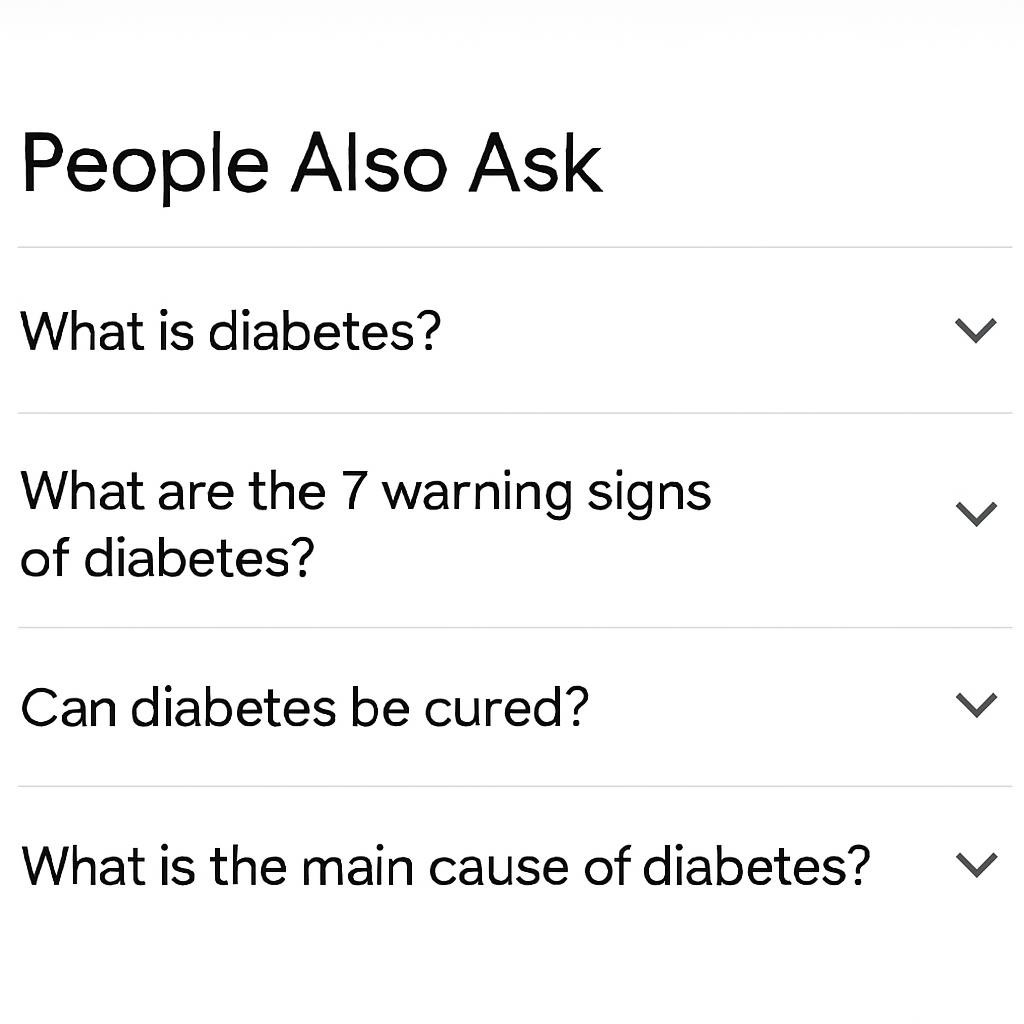
Q: What are probably the most efficient free AI coding assistants for newcomers in 2025? A: For newcomers, Codeium offers one of the most efficient combinations of unlimited usage and comprehensive features. GitHub Copilot’s free tier will be superb for faculty and college students, whereas ChatGPT provides excellent explanations for learning concepts.
Q: Can AI devices help with debugging superior software program factors? A: Absolutely. AI devices excel at pattern recognition and may normally detect widespread bug patterns quickly. Tools like ChatGPT and Claude are considerably effective at explaining error messages and suggesting debugging approaches.
Q: How do AI coding devices cope with entirely different programming paradigms? A: Modern AI devices understand quite a few programming paradigms, collectively with object-oriented and advantageous, however procedural, programming. They adapt suggestions primarily based on the context; however, they present code patterns in your endeavor.
Q: Are there privacy concerns with using AI coding devices? A: Yes, privacy is an official concern. Always check the terms of service and use local processing options when available for sensitive code; however, make sure to use security scanning to prevent exposing credentials.
Q: What’s the difference between code completion and conversational AI coding devices? A: Code completion devices mix into your editor for real-time suggestions, whereas conversational devices require particular interaction with chat interfaces. Many developers use both types of tools for different scenarios.
Q: How do teams coordinate AI software program utilization through quite a few builders? A: Successful teams arrange AI utilization suggestions, share rapid libraries, and conduct frequent teaching sessions; however, they implement code analysis processes that account for AI-generated code.
Essential AI Coding Tools Checklist
Getting Started (Week 1)
- [ ] Choose and arrange one main AI coding software program
- [ ] Configure IDE integration; however, permissions
- [ ] Complete preliminary setup; however, selection configuration
- [ ] Practice with straightforward coding duties
- [ ] Document preliminary productivity baseline
Integration Phase (Weeks 2-4)
- [ ] Add a complementary AI software program for explicit utilization cases
- [ ] Establish code analysis processes for AI-generated code
- [ ] Create a non-public rapid library for widespread duties
- [ ] Train crew members on software program utilization
- [ ] Implement security scanning for uncovered secrets and techniques; however, methods
Optimization Phase (Month 2+)
- [ ] Analyze productivity metrics; however, ROI
- [ ] Develop superior multi-tool workflows
- [ ] Create crew necessities; however, best practices
- [ ] Establish ethical suggestions for AI software program utilization
- [ ] Plan for rising software program evaluation; however, adoption
Security, however, is compliance.
- [ ] Review all AI software program phrases of service
- [ ] Implement information governance insurance coverage policies
- [ ] Set up monitoring for code with excessively high-quality metrics
- [ ] Establish incident response procedures
- [ ] Regular security audits of AI software program configurations
Keywords: free AI coding devices 2025, GitHub Copilot alternate choices, AI programming assistants, code completion devices, artificial intelligence progress, automated coding, machine learning for builders, AI code know-how, developer productiveness devices, ChatGPT coding, Codeium choices, Tabnine privateness, AI debugging devices, autonomous programming, rapid engineering for builders, AI code analysis, software program program progress automation, intelligent IDEs, AI pair programming, excessive high-quality enhancement, AI ethics in programming, developer workflow optimization, AI software program integration strategies, programming assistant AI
Last up so far: September 2025. This article is a component of our quarterly AI progress devices analysis assortment.
